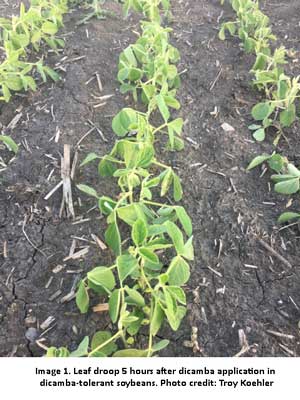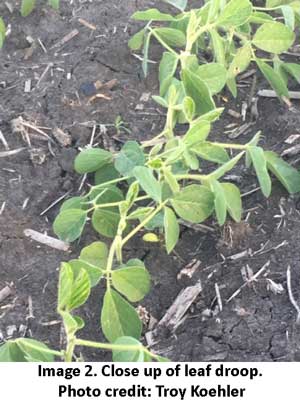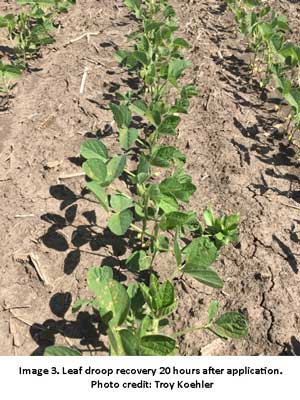June is the month when many of our postemergence herbicides applications are being sprayed in soybeans. This year is no different; many applications have already been made, with more occurring this week. As we start applying XtendiMax™, Engenia™, and FeXapan™ to our dicamba-tolerant soybeans, we need to be aware of new soybean response that could occur.
If dicamba-tolerant soybeans have been under stress prior to an application of the new dicamba formulations, the soybeans may respond by what is known as "leaf droop." Leaf droop is essentially a loss of turgidity in the soybean. This is a temporary response that may resolve itself in a few hours or a few days. This response will not happen in most applications, but it was observed in pre-launch research on this new dicamba-tolerant soybean system. The key point to remember is that this is a cosmetic issue that should have no lasting influence on plant growth or yield. While few have heard of the potential for leaf droop, the XtendiMax™ label informs the applicator about this possibility. An excerpt from the label reads,
"Applications of this product postemergence may cause temporary loss of turgor, a response commonly described as leaf droop in Roundup Ready 2 Xtend® Soybeans. Typically, affected plants recover in 1-3 days depending on the level of droop and environmental conditions."
So while this response will not be present in all dicamba-tolerant soybean fields, don't be alarmed if this is found in a few fields. Take comfort in knowing that this is a normal, temporary response.


